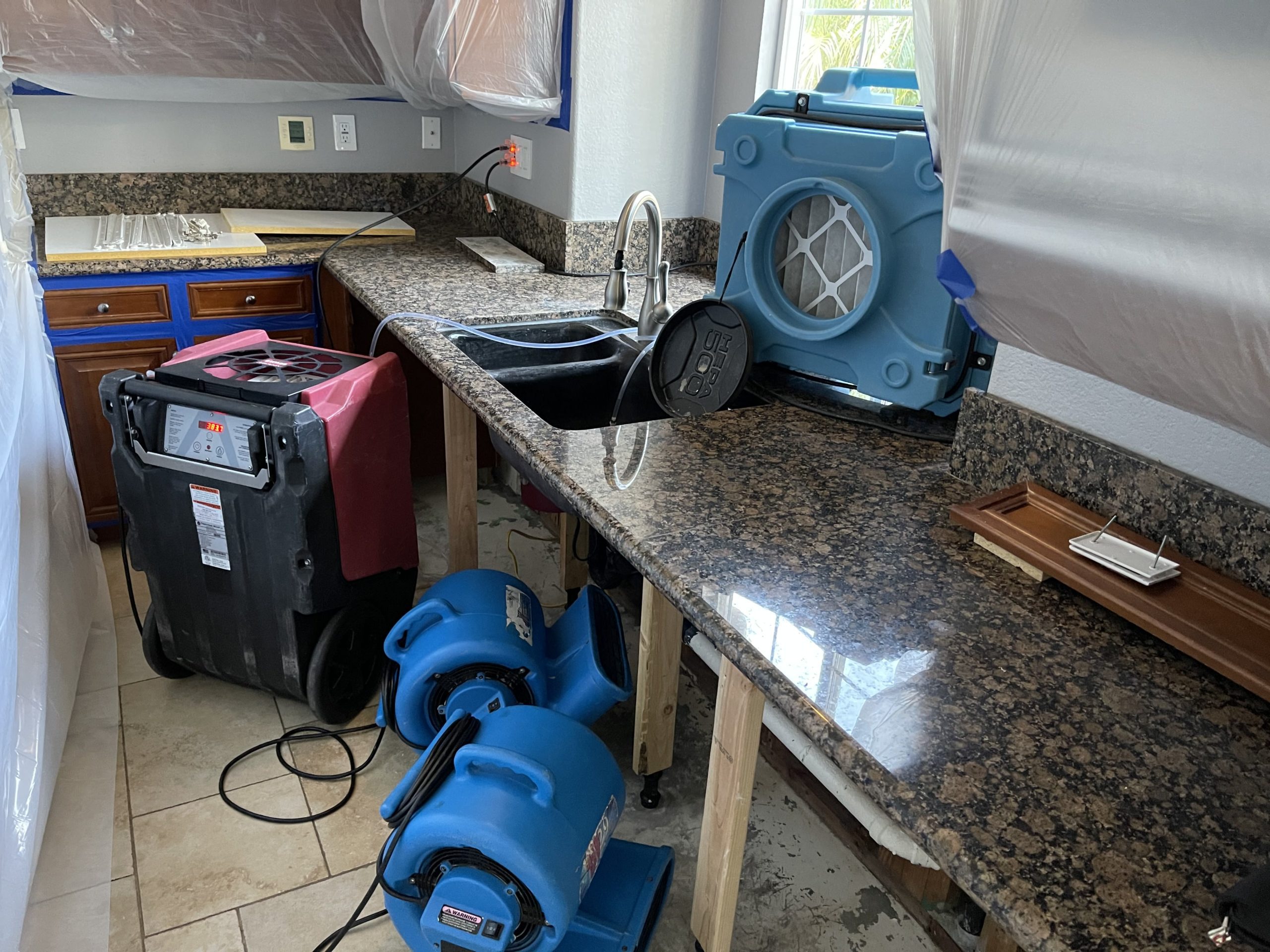Water Damage & Extraction
Water damage can be a home’s or business’ most destructive emergency—a devastating setback for a family or business. Whether storm, plumbing breakage, or fire suppression water can be extremely invasive and damaging, and often, unfortunately, the damage doesn’t end when the source is repaired and water eliminated.
Identifying the full extent of the damage, both the obvious and the unseen, is critical. If not thoroughly and efficiently dried, resultant soaking can lead to further damage over time with rot and mildew that can creep into other areas of the structure. Initial water extraction coupled with the removal of thoroughly damaged materials that eliminates visible moisture damage, must be followed by dehumidification to extract lingering moisture from the affected structure.

What to do until help arrives
- Evaluate your safety and take appropriate action to stop the water source.
- Turn off your HVAC system, fans or other air moving equipment you have in your home.
- Salvage what possessions you can and restrict access to wet areas for pets and kids.
What is the water damage & extraction process?
1. Extraction & Removal
We quickly remove furniture and salvageable items out of harm’s way. Then extract any standing or stagnant water using industrial-strength water extractors.
2. Containment & Demo
Setup up containment and begin removing unsalvageable materials and affected structures. Cleaning and disinfecting all affected areas.
3. Drying & Monitoring
Begin drying out the home’s structural components with the appropriate equipment. Conducting humidity and moisture testing to ensure all issues have been resolved.
4. Removal & Estimating
Once all areas are dry, remove drying equipment and put together an estimate for insurance or the homeowner.
FAQ
Water damage can occur for a variety of reasons. Excess water in your home can come from natural disasters such as hurricanes or floods, as well as from pipes that burst. Household appliances may also malfunction and cause water damage. Septic tanks or pipes can backup and cause raw sewage to spew into your crawlspace or home. Rain gutters and roof drains can get backed up. Bathtubs and showers that are poorly constructed or need the grout replaced can permit water to seep through and create mold and other unwanted effects.
Proper maintenance and care of your appliances can help minimize the risk of a water issue. Investigating immediately any signs of water damage you may notice in your home. For example, water-stained, discolored, or moldy surfaces, warped floors, peeling or bubbled paint, rotting wood etc. You can also teach everyone who lives in your home where the water supply cutoff valve is so they can turn it off in the event of an emergency.
Whether or not the insurance company will cover the damage depends on the source of the damage, (i.e. whether it was a natural disaster like a flood, or if it was caused by a burst pipe.), and your policy limitations. The insurance company will also want to make sure that you took the necessary precautions to try and prevent the situation.
Restoration Plus is experienced with the insurance claim process. We deal with insurance companies on a regular basis and can help you submit your claim properly and effectively the first time around. We are here to help you.
